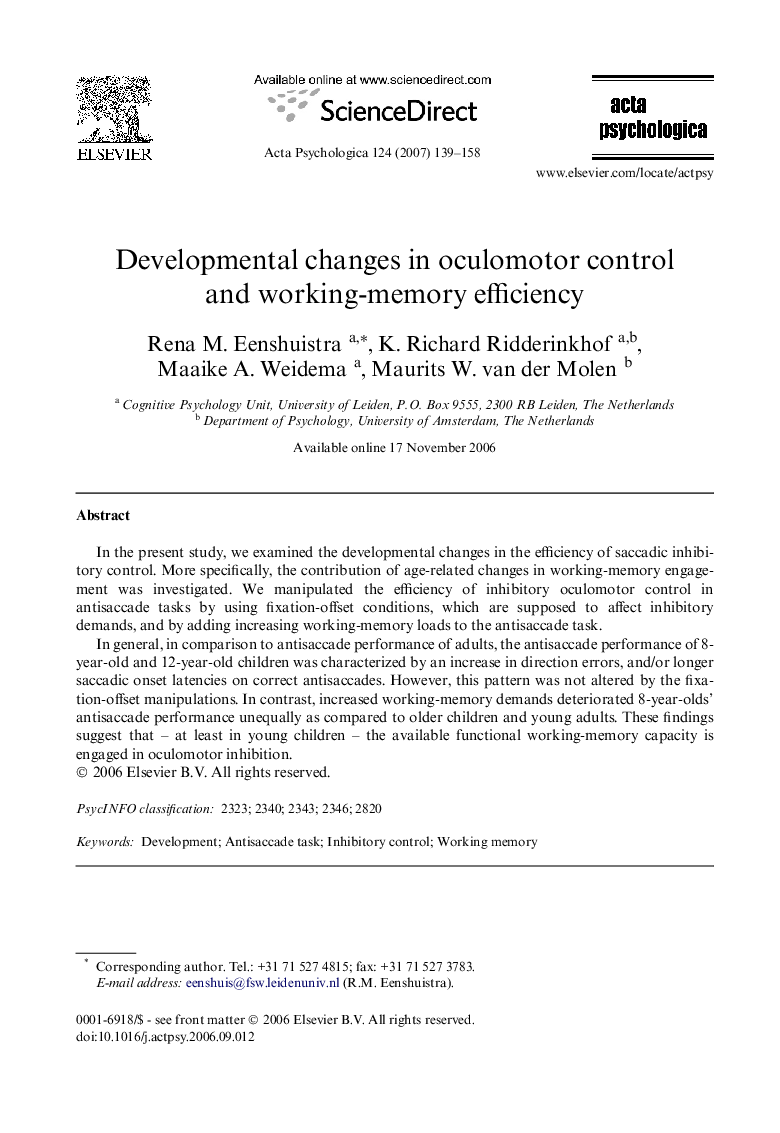| Article ID | Journal | Published Year | Pages | File Type |
|---|---|---|---|---|
| 920595 | Acta Psychologica | 2007 | 20 Pages |
In the present study, we examined the developmental changes in the efficiency of saccadic inhibitory control. More specifically, the contribution of age-related changes in working-memory engagement was investigated. We manipulated the efficiency of inhibitory oculomotor control in antisaccade tasks by using fixation-offset conditions, which are supposed to affect inhibitory demands, and by adding increasing working-memory loads to the antisaccade task.In general, in comparison to antisaccade performance of adults, the antisaccade performance of 8-year-old and 12-year-old children was characterized by an increase in direction errors, and/or longer saccadic onset latencies on correct antisaccades. However, this pattern was not altered by the fixation-offset manipulations. In contrast, increased working-memory demands deteriorated 8-year-olds’ antisaccade performance unequally as compared to older children and young adults. These findings suggest that – at least in young children – the available functional working-memory capacity is engaged in oculomotor inhibition.
